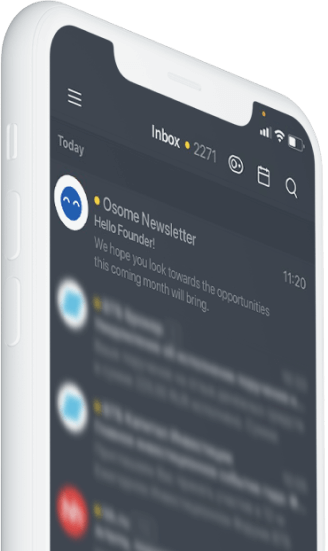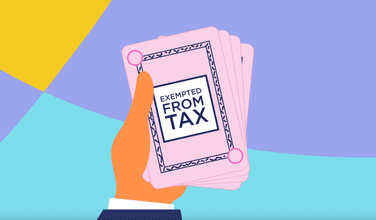6 Tips to Improve Accounting Accuracy for Hong Kong Companies
Stay compliant with the Inland Revenue Department and prepare end-of-year financial statements in no time at all when you follow these tips for accounting accuracy of your company.

You’ve registered your company in Hong Kong and can’t wait to start your business running. But as you focus on daily growth and fighting fire on your operations, you start to push your accounting duties to one side. Receipts are stored here, there, and everywhere, invoices are haphazardly saved somewhere on your computer (at least, you think they’re all saved) and you’re so busy planning tomorrow’s important client meeting that you simply don’t have the time to focus on big-picture financial planning.
This is understandable, we get it. However, that doesn’t mean that it’s the ideal way to operate. By maintaining accounting accuracy all year round—in other words, keeping detailed and orderly records—you’ll be able to:
- Stay compliant with Inland Revenue Department;
- Make the most out of your allowable expenses;
- Legally reduce your tax obligations;
- Prepare end-of-year financial statements in no time at all;
- Plan your business’s path to a prosperous future;
- Run your business with more confidence.
Throughout this article, we’ll explore the five must-know tips to help Hong Kong companies improve their accounting accuracy going forward.
1. Identify revenue streams
Revenue streams are as simple as they sound—they’re essentially the sources of your business’s revenue. Your company may well have a few different revenue streams, such as:
- Transaction-based revenue
John sells baby clothes on Taobao.com
- Project revenue
Emma has just begun building a brand new conservatory for one of her clients.
- Service revenue
Mark earns a living as a masseuse.
- Recurring revenue
Sally rents out the ground floor of her office space to another business.
You might be thinking: “Okay, great—but why is it so important to identify revenue streams?”. Well, revenue streams are at the heart of your business—and so they’re also at the heart of your accounting duties.
If you want to send Inland Revenue Department (IRD) accurate financial statements then you need to first identify all your revenue streams.
In order to pay the correct amount of tax (and avoid penalties and fines), you need to make sure that you don’t miss anything off your reports. If you want to plan for the future and identify valuable opportunities for growth, you’ll need to be aware of your current value streams.
In short, identifying—and appropriately managing—your multiple revenue streams is key to everything that your business does. Staying on top of your revenue streams is the first step to running a profitable enterprise.
2. Keep track of invoices and receipts
Invoices and receipts are the financial lifeblood of your company. Unpaid or late invoices will affect your cashflow. To manage this, remember that unless you have been paid for your previous order, you cannot take up a new order from the client.
By keeping track of your invoices and receipts (also known as Accounts Receivables and Accounts Payable), you’ll be able to accurately work out how much you owe, how much you’re owed, when you completed X, Y, or Z project, how much you’ve spent, and on what. Not only is this important in the context of startup business planning, but it’s also a key factor in ensuring accounting accuracy.
Keeping track of invoices and receipts will help you claim all allowable deductions, meaning you won’t unnecessarily pay more tax than you ought to. You’ll remain compliant and won’t accidentally forget to include certain income on your financial statement (which is obviously frowned upon by IRD). What’s more, you’ll maintain an accurate birds-eye view over your revenue and spend—allowing you to identify your most valuable clients, biggest outgoings, unnecessary expenses, etc.
Or perhaps you’re just looking to cut down on the amount of time you spend compiling your tax returns. Whatever the reason, it pays to stay on top of your invoices and receipts.
Bear in mind that you are required to keep all your Company bank statements, invoices and receipts for 7 years.
3. Prepare financial statements
Financial statements tell your business’s story over the past financial year: detailing the projects you’ve been involved with, how much you’ve earned, how much you pay your employees, whether you’re in the red or the black, and more.
Your financial statement comprises three key elements:
1. Balance sheet: An overview of all your assets and liabilities (as well as stockholders’ equity if applicable).
Debby is preparing her private business’s balance sheets. First, she counts up her fixed assets: work computers, office furniture, warehouse machinery, and stock. Then, she looks at her current assets: how much money the company has in the bank, how much they have in the till, and how much they’re owed by clients. Finally, she considers her creditors: the cost of office rent throughout the following year, SaaS subscriptions, and how much the business will owe utility suppliers at the year-end date.
2. Income statement (also known as a profit and loss statement, or P&L): A snapshot of your company’s revenues and expenses throughout the financial year. While this might seem very similar to a balance sheet—and it does contain much of the same information—they’re not exactly the same.
According to Investopedia, “The balance sheet reports the assets, liabilities and shareholder equity at a specific point in time, while a P&L statement summarizes a company's revenues, costs, and expenses during a specific period of time.”
Dave calculates his annual revenue—in other words, the amount that his restaurant has brought in throughout the year from selling food and drinks. He then deducts all expenses: rent, the cost of purchasing ingredients, utility bills, and staff wages. Having completed this calculation, he’s now arrived at his net operating income.
To calculate his restaurant’s net profit, however, Dave also has to consider any outstanding debts and interest payments—such as the HK$10,000 loan from the bank to get started (a debt that’s now reached HK$11,200 due to interest).
3. Cash flow statement: An overview of where your company’s money came from during the financial year and how it was spent.
Beena first takes stock of her business’s operations cash flow. This includes the revenue her garage brought in (before tax) from selling cars, as well as the depreciation of older cars that she hasn’t been able to sell.
Having calculated her operations cash flow, she now looks at her investing activities. This might include things like investing in brand new computers for all her back-office staff. Finally, she includes her financing activities—for instance, her loan repayments to the bank.
Once you’ve prepared your balance sheets, income statement, and cash flow statement, you’re now ready to proceed the audit..
It’s crucial that you do this in a timely manner. According to IRD, failure to do so can result in:
- Criminal prosecution;
- Civil penalties;
- Pay even more tax
4. Track deductible expenses
The government wants to encourage businesses to flourish—after all, this is crucial for a healthy economy. As such, certain job-related expenses are tax-deductible (these are also known as allowable expenses). This means that if you pay for goods in order to keep your business running, then you’ll be able to reduce your tax bill accordingly.
Over the course of their financial year, Mo’s business brought in HK$500,000. However, it spent HK$150,000 on allowable expenses (including the cost of business-related travel, staff salaries, and accounting fees). This means that Mohammad’s business is only liable to pay tax on HK$350,000 worth of its revenue, i.e. the Net Assessable Profits.
Tracking deductible expenses means that your business won’t unnecessarily pay too much tax. Whilst it’s always a good idea to stay in Inland Revenue’s good books, these rules are in place for a reason—so you need to make the most out of them.
Not only will keeping track of your deductible expenses reduce your company profit taxes, but it’ll also significantly improve your operating margins and may even help with cash-flow planning.
5. Seek professional guidance
Depending on the size and nature of your industry, you may be able to use accounting software that’s already available out there or customize your software. We’re always here to help you with using Xero, which is our software partner.
6. Automate whenever you can
Software is now simplifying the tedious process of entering data into spreadsheets and manually reconciling figures. You can use cloud-based accounting software which complements your digital business. Since you already do all your banking online as well, using the software will sync your business bank account with the cloud software, and do so securely.
Run your business with confidence
By implementing our 6 top tips listed above, you’ll stay compliant, build a strong relationship with IRD, pay the correct amount of tax, and maintain accounting accuracy at all times. Stay on top of your business’s financial health and make next year your most profitable to date.
Get in touch to find out more about how Osome helps the Accounting, Audit and Tax Return filing for your Hong Kong businesses of all shapes and sizes stay on top of their accounting tasks







